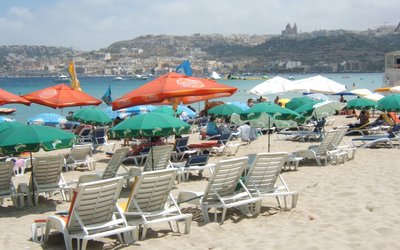Future increase of heat stress productivity losses relatively low in Europe
December 30, 2021

Photo: Bill Jacobus (www.flickr.com)
The expected strong increase of the number of people exposed to heat-humidity extremes will probably have substantial economic implications due to losses in productivity of workers. According to some estimates, global gross domestic product (GDP) could be lower by 2.6% – 4% in 2100 due to heat stress under a high-end scenario of climate change. The impact will be strongest in tropical and sub-tropical regions of the world. Also in Southern Europe, the number of days with high heat stress will strongly increase. Scientists project an increase by 5-15 days and 30-50 days in an average year by the end of the century for a low-end and high-end scenario of climate change, respectively.
Heat stress impacts
Recently, results have been published on labour productivity loss in Europe at different times in this century. The results are based on a high-end scenario of climate change and, therefore, represent a worst-case scenario.
Heat stress is represented by the combination of temperature, humidity, wind speed and solar exposure. Heat stress was calculated for a high-end scenario of climate change from the results of 11 regional climate models. The impact of heat stress on labour productivity loss was calculated for four work categories that vary in the exposure to heat stress from the lowest exposure for workers undertaking light work indoors to the highest exposure for workers in agriculture and construction working outdoors in the sun. The average impact was calculated for 30-year time slices representing the 2020s, 2050s and 2080s. A 30-year time slice representing the 1990s was selected as a reference.
Without adaptation
Without adaptation to the increasing heat stress, the average productivity loss in Europe, compared to the reference of the 1990s, is projected to be 0.1%, 0.3% and 0.7% of Europe’s GDP for the time horizons of the 2020s, 2050s and 2080s, respectively. The worst-case scenario losses could be around three times larger and reach, respectively, 0.3%, 0.8% and 1.6%.
These averages mask underlying diversity of regional impacts. Future production losses are largest in southern European regions: south of Spain, then along the Mediterranean coast through France and Italy, Croatia and Greece. In this part of Europe, productivity losses can reach 3% of a country’s GDP by the 2080s on average, and up to 8% in the worst-case scenario. This is not only due to a relatively high heat stress. In this part of Europe, a large part of the population works in agriculture, forestry and fishing, with a high exposure to heat stress. Quite high productivity losses are also estimated for Romania, where a large part of the population works in the category of high exposure to heat stress.
The estimated productivity losses are lowest for northern European countries and would not exceed 0.23% of the GDP even in the worst case.
Positive effects of adaptation
Adaptation could alleviate the negative impacts of heat stress. The authors of this study looked at the effects of two different types of measures: more space cooling and an increasing use of robotic exoskeletons. The use of wearable robotics, the authors assume, will allow reducing the physical workload of humans from heavy to moderate. The authors conclude that adaptation can reduce the productivity losses by around 40%. In the short term – the 2020s – air conditioning would be most effective. In the longer term – the 2050s and 2080s – robotic solutions would have become an effective adaptation method.
Source: Szewczyk et al. (2021). Environmental Research Letters 16, 105002.








